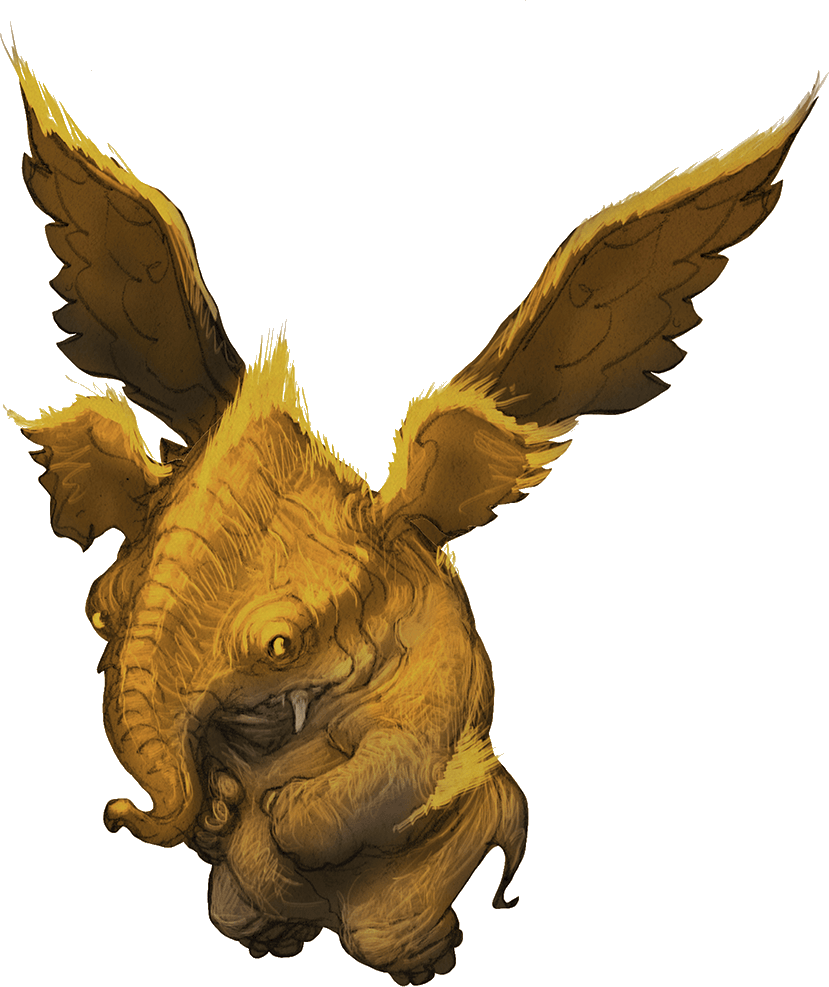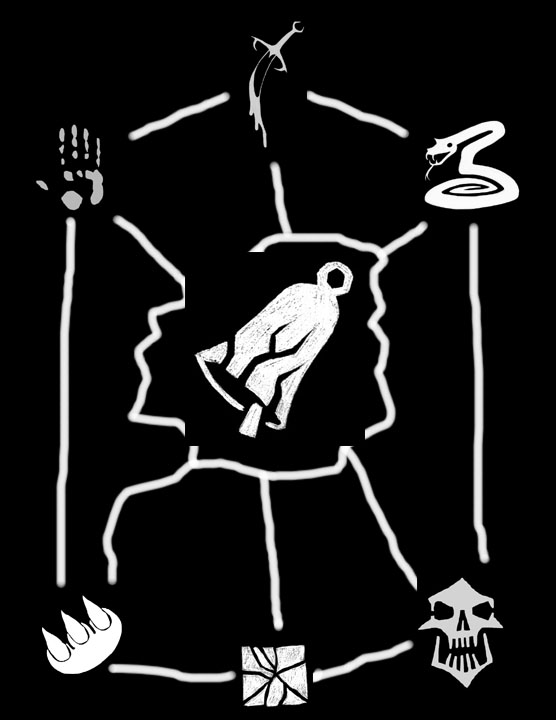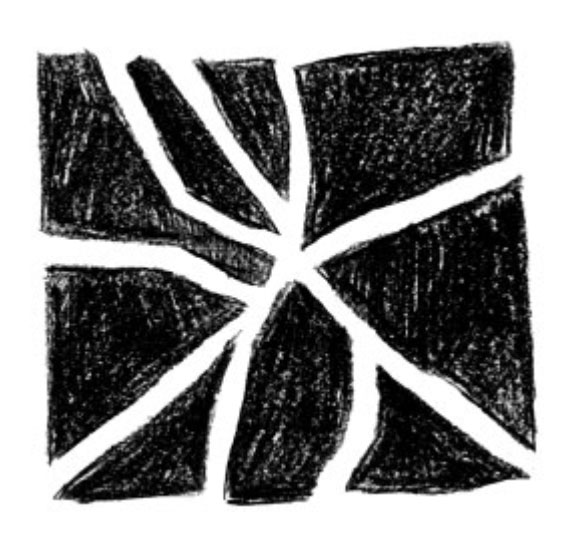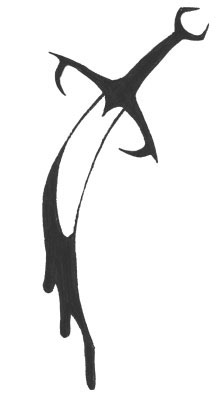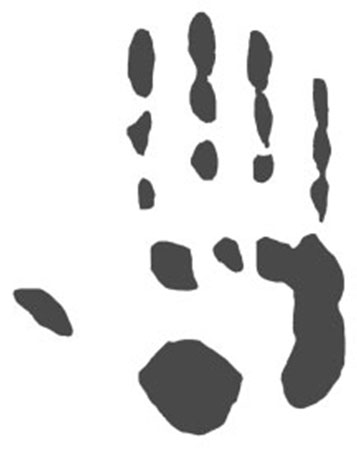
DISCUSSING:
In the Shadow of the Spire – Session 22C: Workings of the Chaos Cult
Tee, meanwhile, had discovered that one of the wood panels on the floor was loose. Prying it up revealed a small cache containing two books and a gold ring bearing the device of a broken square. Ranthir was immediately distracted by the books. Eagerly taking them from Tee’s hands he began flipping through them.
In this session we see a couple examples of what I refer to as lore books. These are generally one page handouts (although it’s fine if they end up being longer) that are given to the players when the PCs discover a book with significant information:
If you want to see a particularly large number of examples, check out the Books of the Los Angeles Cult and Savitree’s Research from the Alexandrian Remix of Eternal Lies. (I produced a, frankly speaking, ludicrous number of these for that campaign. To rather good effect in actual play, but I wouldn’t recommend it as an example of my standard practice.)
In practice, these handouts more or less serve as an executive summary for a book that doesn’t actually exist. (If you’re not familiar with these, they really do exist: People pay services to read books – usually business-related books – and produce brief summaries that can be quickly digested without reading the full book. This didn’t make a lot of sense to me until I realized just how much endless, repetitive blather can be found in these books. Although I’m always curious if this is because the authors of these books know that they’re just going to get boiled down to a set of highlights… But I digress. The nice advantage to this is that you can find any number of resources on line about how to write effective executive summaries.)
One significant divergence between my technique and the writing of an executive summary is that I will usually also discuss the actual physical interaction with the book. For example:
This slim, peculiar volume purports to be “a dream woven from the true and factual accounts of many diverse peoples of the world,” but it is rather difficult to separate what is meant to be scholarship from fancy. It is perhaps notable that the author’s name has been savagely crossed out on every page on which it would normally appear with a thick, dark ink, making its recovery utterly impossible. The volume’s only other distinguishing mark is an imprimatur placing its publication in Shanghai.
Or:
This slim folder of supple hide, clasped shut with a length of emerald green ribbon, contains a dozen or so individual sheets of parchment. Written in an archaic – almost alien – form of the common tongue, they tell a sad and cautionary tale.
The idea, of course, is to communicate the sensation of actually reading the book to the player.
 “Why not just write the entire book and give it to them as a handbout?” …you’re adorable. But, seriously, I get asked this with surprising frequency, despite the answer seeming to be blindingly obvious: Writing a 50,000 or 100,000 word book as a handout is not necessarily out of the question (if it were to be a centerpiece of an entire campaign, for example), but is certainly not an endeavor to be undertaken trivially. And even if I were to write such a thing, pausing the campaign to allow the player(s) to read book-length confabulism would be to change one recreational activity into a fundamentally different one.
“Why not just write the entire book and give it to them as a handbout?” …you’re adorable. But, seriously, I get asked this with surprising frequency, despite the answer seeming to be blindingly obvious: Writing a 50,000 or 100,000 word book as a handout is not necessarily out of the question (if it were to be a centerpiece of an entire campaign, for example), but is certainly not an endeavor to be undertaken trivially. And even if I were to write such a thing, pausing the campaign to allow the player(s) to read book-length confabulism would be to change one recreational activity into a fundamentally different one.
Conversely, though, why not forego the entire exercise and simply give the players the pertinent clue?
First, this is a variation of the Matryoshka search technique: Simply telling the players what they find is a less engaging and less entertaining experience than the players actually plucking the information out of the “book” (even if it is just a summary).
Second, these lore books can be densely packed with information: Not just the clue (or clues) that can lead the PCs to a new revelation, but also deeper lore about the game world that can provide a broader context for the merely procedural action. (It’s significant that a lore book inherently hits on several of the techniques discussed in Random GM Tips: Getting the Players to Care.)
Third, it’s easier to hide clues in the full text of a lore book. It’s deeply unsatisfying for the players when the GM says something like, “Oh my gosh! You remember reading something about this in the Unaussprechlichen Kulten!” Conversely, it’s VERY satisfying when a player suddenly shouts out, “Oh my god! We read about this! Hang on, let me grab the book!”
(In a similar fashion, lore books also offer the opportunity to present puzzles which must be solved. Sometimes this “puzzle” is cross-referencing information across several lorebooks obtained over time.)
Fourth, the physical handout makes it easier for players to reference the key information from the book and to refresh their memory whenever they choose. (This goes beyond merely lore books, but if there’s particularly crucial information – or information that will be relevant across many different sessions – putting it in the form of a handout is a very good idea.)
Fifth, it’s frankly just a more immersive experience for the players. They may not actually be reading the book, but it feels like it. Plus, a book that you just describe verbally is a transient experience. But a book that’s physically at the table – even if it’s just in the form of a piece of paper – really and truly exists. Just the act of players saying things like, “Who has the Fragments of Bal-Sagoth? I want to check what it has to say about Gol-Goroth,” or “Remember when we read The Book of Mrathrach?” is significant.
TIPS & TRICKS
Writing a lore book is more art than science, but here are a few things to keep in mind.
I almost always try to include a picture. In the case of the chaos lorebooks from In the Shadow of the Spire, that was frequently a cult sigil or the image of a chaos creature that was the subject of the book. In the case of Eternal Lies this was almost always the cover of the book. (These days it’s trivial to find scanned images of antique books online that can be repurposed with little or no image manipulation.) Visuals are nice in any case, but there’s also a base utility here: The image makes the handout distinct, not only in the players’ memories, but also when they need to find it again among their various notes and handouts in the future.
To establish the style of the book or to capture the enigmatical nature of the “source” text, include quotations. These can be short fragments or lengthy passages, depending on both your inspiration and need. For example:
The last few pages of the book appear to be a prophetic rambling of sorts, beginning with the words, “In the days before the Night of Dissolution shall come, our pretenses shall drop like rotted flies. In those days the Church shall be broken, and we shall call our true god by an open name.”
Here the lengthier passage captures the unique quality (and also vaguery) of the religious imagery. Conversely:
A closer reading quickly reveals that these deformities – referred to as “the touch of the ebon hand” – are venerated by the writers as the living personification of chaos incarnate.
In this case, I could have just as easily dropped the quotation marks. But including them presents a little “window” into the full text through which the player can project themselves.
As I mentioned before, describe the experience of reading the book. This can be the physicality of the book itself, but you can also relate the sequencing or revelation of knowledge (e.g., “a closer reading quickly reveals” or “on the final pages”).
You can prepare multiple versions of the text, with different versions being “unlocked” under certain circumstances. For example, you might have one handout that describes the physical characteristics of a drow lore book, and another which only becomes available once the PCs are able to read the drow language. A particular insight might require the character to have a particular skill, or a skill of a high enough level. Or there might be a hidden puzzle in the initial handout which, if the player can solve it, will allow them to discover additional layers of meaning in the text (provided in an additional or expanded handout).
You can combine (and expand) these last two ideas by presenting different editions of the same book. This is a common conceit with Mythos texts, for example. Thus the players can find an expurgated or damaged copy of a book early in the campaign, and then find a more complete copy (or one with an alternate ending) later. Marginalia can also be used to distinguish individual copies of a book.
Books can also cross-reference other books. Usually these cross-references don’t really “exist” (there’s not a lore book prepped for them), but in other cases these additional sources (often ripe with deeper information) will crop up later in the campaign. If you’re running a game in the real world, it can sometimes be fun to cross-reference real books.
WRITING THE BOOK
In terms of figuring out what information should be in a lore book, the process is basically part and parcel with plotting out the revelations of a scenario or campaign.
A key insight, however, is that the book should generally not just blandly state the conclusion you want the PCs to make. Instead of writing the conclusion, you are writing the clue which will let the  players figure out the conclusion. It’s a subtle difference, but a meaningful one. Often I achieve this effect by presenting the information in an oblique or mythic manner. (For an example of how complicated and interwoven this can be, you might trace the references – both direct and oblique – to Azathoth in the Eternal Lies lore books.)
players figure out the conclusion. It’s a subtle difference, but a meaningful one. Often I achieve this effect by presenting the information in an oblique or mythic manner. (For an example of how complicated and interwoven this can be, you might trace the references – both direct and oblique – to Azathoth in the Eternal Lies lore books.)
Along the same lines, it is often useful if the key information is not what the book is primarily about. Or, to think of it in a different way, the primary goal of the fictional author of the book is not to communicate the key information. Write the lore book as a description of what the book is – a scholastic study of Byzantine emperors, a 19th century poetry collection, a manual describing elven funeral practices – and then drop the campaign-relevant information as an aside or one detail among many or an example serving a purpose in the text distinct from that to which the PCs will put it (or interpret it).
(This is not universally true. It can often be just fine to have a book whose primary function is to tell people about the very thing that the PCs need to know. This is particularly true if the lore book is being used to convey a great deal of pertinent information. I often think of these as a “briefing documents,” and the two lore books in the current session – Truth of the Hidden God and Touch of the Ebon Hand – are of this nature.)
Lore books don’t have to be just about clues, either. I often build mechanical benefits or character advancement opportunities into lore books.
- GUMSHOE games have a great mechanic for this in the form of dedicated pool points, so that if a player has the book with them it can mechanically benefit their investigations. This also has the nice effect of procedurally adding additional content to the book beyond the initial summary in response to player-initiated actions.)
- D&D spell books are an easy example. Relatively simple handouts containing the spell lists from captured spell books can offer a surprisingly rich amount of game play.
This is a great way to introduce homebrew or supplementary content into a campaign, particularly for players who aren’t typically interested in that sort of thing. I’ve used lore books to introduce new feats, new spells, new class features, and even whole new mechanical sub-systems.
My last piece of advice is this: Get specific. Lore books with a narrow focus are often more interesting than general cyclopedias. But even as you’re writing out a broad summary of what the book is about, pepper it with specific examples. Instead of having a book that’s “about haunted houses,” give examples of specific haunted houses. That specificity is what will make the lore book come alive.
NEXT:
Campaign Journal: Session 23A – Running the Campaign: Cliffhangers
In the Shadow of the Spire: Index





 first time in centuries, the Avernian frontiers were in utter disarray. Although no alliance was formed between the baatorians and demons, armies of both races freely crossed the Styx.
first time in centuries, the Avernian frontiers were in utter disarray. Although no alliance was formed between the baatorians and demons, armies of both races freely crossed the Styx.